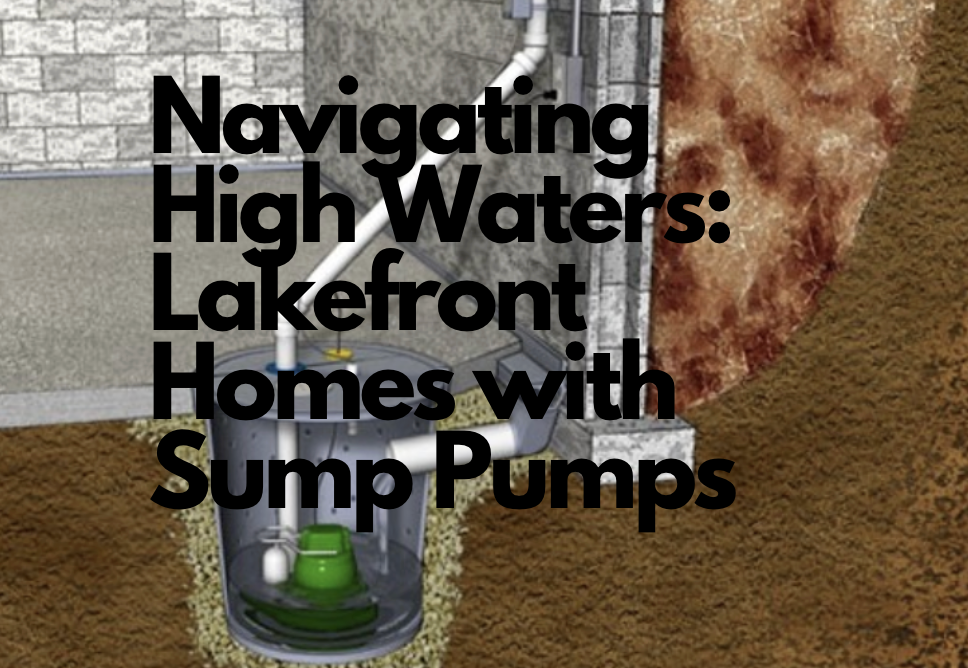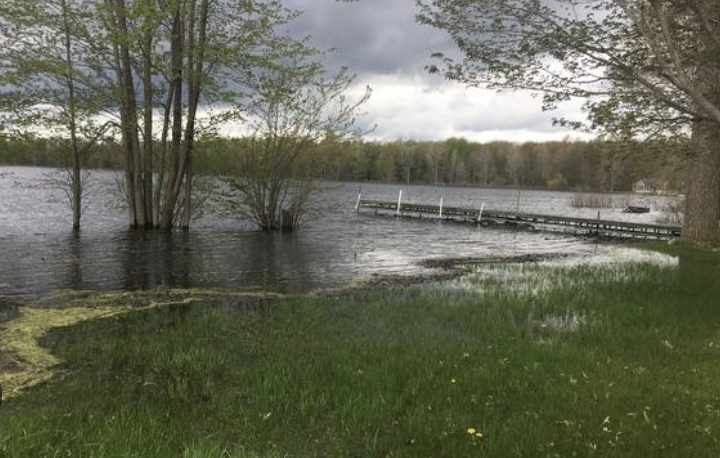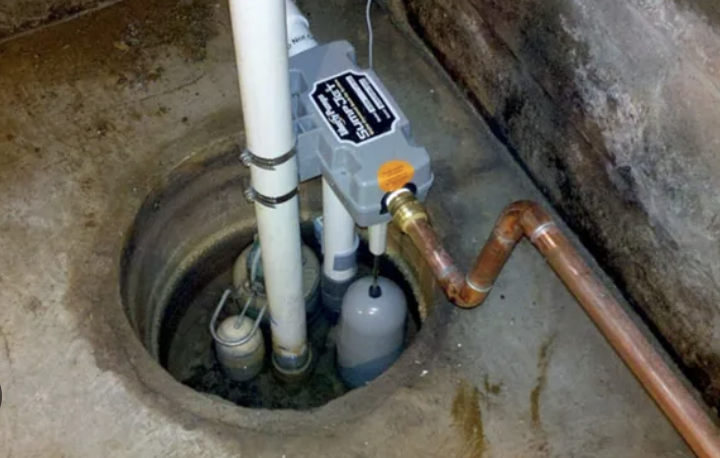
Living in a picturesque lakefront home is a dream for many. The serene vistas, calming sounds of rippling waters, and the sense of tranquility are undeniably appealing. However, along with the beauty of lakeside living comes the reality of dealing with challenges unique to waterfront properties. One such challenge is managing the high water table, especially in areas prone to flooding or with fluctuating water levels. In this blog post, we’ll explore the necessity and benefits of sump pumps in lakefront homes, how they work, and essential considerations for homeowners.
Understanding the High Water Table
Before delving into the role of sump pumps, it’s crucial to understand what a high water table entails. A high water table refers to the level at which groundwater is found beneath the surface of the ground. In areas with lakefront properties, the water table can be particularly high due to the proximity to the lake. Additionally, factors such as soil composition, rainfall, and geological conditions can influence the water table’s height.
Challenges Faced by Lakefront Homeowners
Lakefront homeowners often encounter various challenges associated with a high water table. These challenges may include:
- Basement Flooding: Homes built on or near lakefronts are susceptible to basement flooding, especially during periods of heavy rainfall or when the water level in the lake rises significantly. Groundwater can seep into basements through cracks in the foundation or via basement windows and doors, leading to water damage and mold growth.
- Structural Damage: Prolonged exposure to moisture can compromise the structural integrity of a home. Water infiltration into the foundation can weaken the concrete, leading to cracks and instability. Over time, this can result in costly repairs and diminished property value.
- Mold and Mildew: Excess moisture in basements or crawl spaces creates an ideal environment for mold and mildew growth. Besides causing musty odors and unsightly stains, mold poses health risks to occupants, particularly those with respiratory issues or allergies.

The Role of Sump Pumps
Sump pumps are essential components of a comprehensive waterproofing system for lakefront homes. These devices are designed to remove excess water from basements or crawl spaces, preventing flooding and keeping the space dry. Here’s how they work:
- Installation: Sump pumps are typically installed in a specially constructed pit or sump basin located in the lowest part of the basement or crawl space. The pit collects groundwater that accumulates around the foundation.
- Activation: When the water level in the pit reaches a predetermined height, a float switch or pressure sensor triggers the sump pump to turn on automatically. Alternatively, some models feature electronic sensors that detect moisture levels and activate the pump as needed.
- Pumping Action: Once activated, the sump pump begins pumping water out of the pit through a discharge pipe or hose. The water is expelled away from the foundation and directed towards a storm drain, dry well, or other suitable drainage area.
- Monitoring and Maintenance: Regular maintenance is essential to ensure the proper functioning of sump pumps. Homeowners should inspect the pump and pit regularly, clean debris that may accumulate, test the pump’s operation, and replace worn-out components as needed.

Benefits of Sump Pumps for Lakefront Homes
Investing in a sump pump offers several benefits for lakefront homeowners, including:
- Flood Prevention: Sump pumps help prevent basement flooding by efficiently removing excess water before it can seep into the home’s foundation. This proactive approach minimizes water damage and reduces the risk of mold growth and structural issues.
- Property Protection: By keeping basements and crawl spaces dry, sump pumps protect valuable belongings stored in these areas, such as furniture, appliances, and personal belongings. They also safeguard the integrity of the home’s foundation, preserving its structural stability.
- Peace of Mind: Knowing that a reliable sump pump is in place provides homeowners with peace of mind, especially during periods of heavy rainfall or when water levels in the lake rise. Instead of worrying about potential flooding, homeowners can enjoy their lakeside retreat with confidence.
Considerations for Homeowners
When selecting and installing a sump pump for a lakefront property, homeowners should consider the following factors:
- Pump Capacity: Choose a sump pump with adequate capacity to handle the expected volume of water. Factors such as the size of the basement or crawl space, the severity of the water table, and local weather patterns should be taken into account.
- Power Source: Sump pumps can be powered by electricity or battery backup systems. In areas prone to power outages, a battery backup ensures continuous operation during emergencies.
- Maintenance Requirements: Regular maintenance is crucial to keep sump pumps in optimal condition. Homeowners should familiarize themselves with the manufacturer’s maintenance recommendations and schedule periodic inspections accordingly.
- Professional Installation: Proper installation is essential for the effective operation of sump pumps. Homeowners are encouraged to hire licensed contractors with experience in waterproofing and sump pump installation to ensure the system is installed correctly.
Conclusion:
Lakefront living offers many rewards, but it also comes with unique challenges, such as managing a high water table. Sump pumps play a vital role in mitigating these challenges by preventing basement flooding, protecting property, and providing peace of mind to homeowners. By understanding the importance of sump pumps and taking proactive measures to install and maintain them properly, lakefront homeowners can enjoy their slice of paradise without worrying about rising waters.
Posted by Scott Freerksen “The Lake Guy”
